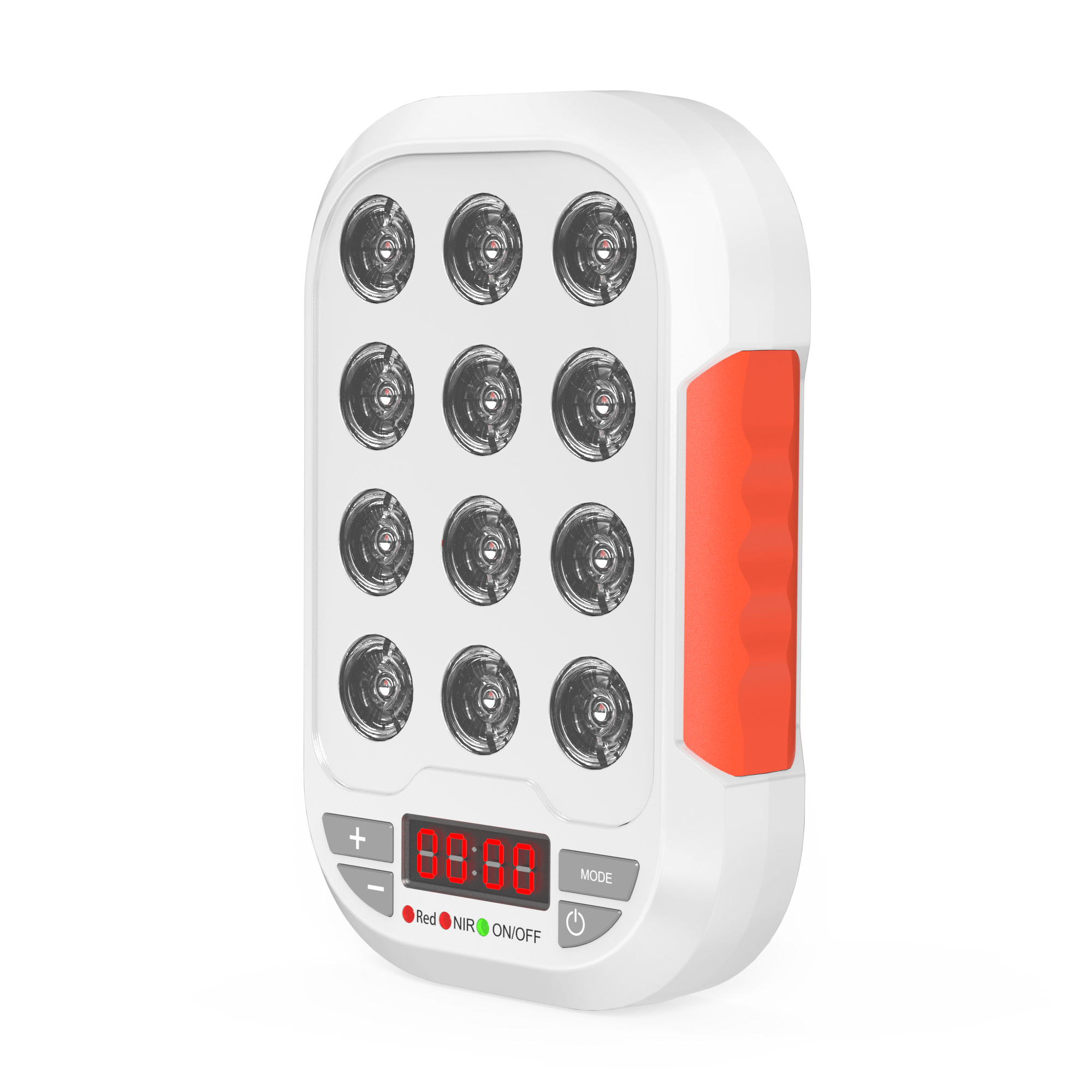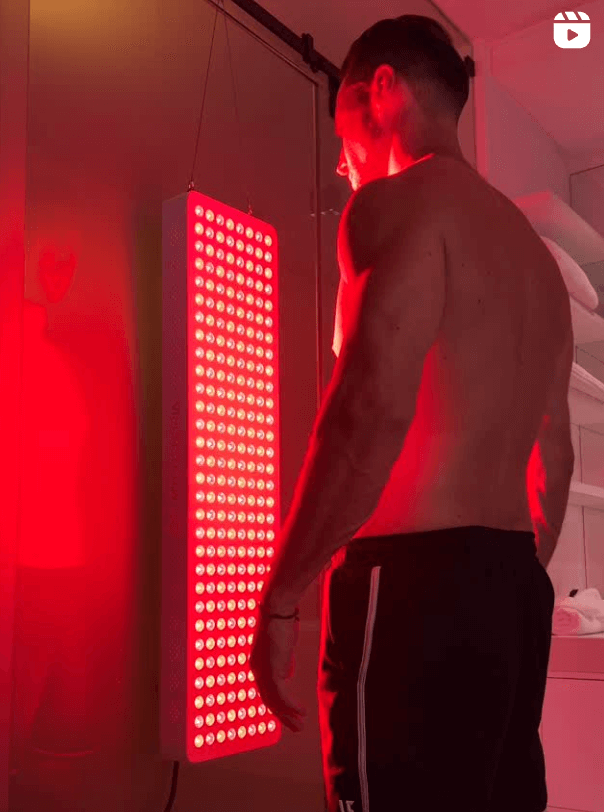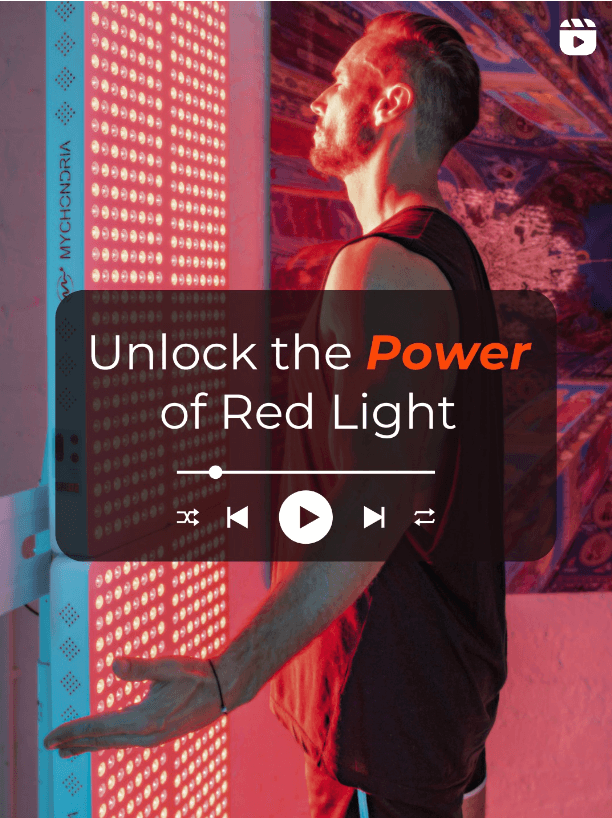
Did you know that 1 in 10 Americans have diabetes, and over 422 million sufferers worldwide. It is a metabolic disease that presents itself in two different types both relating to insulin production and usage.
The result is an imbalance in blood glucose levels, leading to various health complications. Scientists and healthcare professionals have been striving to stop the progression of diabetes and its complications.
In this blog, we will explore how red light therapy can be used as a tool to treat the complications caused by diabetes.

Type 1 & Type 2 Diabetes
Type 1 diabetes sufferers are unable to produce any insulin naturally. The insulin-producing cells have been attacked and destroyed by the immune system, therefore it is an autoimmune disease.
Type 2 diabetes isn’t an autoimmune condition. Your body isn’t making enough insulin or what it makes isn’t working properly. This often is linked to lifestyle factors. Type 1 diabetes affects 8% of diabetes sufferers while type 2 diabetes affects 90%.
Major Complications Caused by Diabetes
• Peripheral Vascular Disease (PVD): essentially means - poor blood circulation, can lead to issues like leg pain and slower wound healing.
• Peripheral Artery Disease (PAD): poor circulation caused by blocked and narrrow arteries from high blood sugar. This prevents nitric oxide production and reducing blood and oxygen flow to external tissues.
• Diabetic foot ulcers: stubborn sores that can develop due to nerve damage and poor blood flow, and can lead to infections. Diabetes is a big player in amputations, causing over 60% of non-traumatic lower limb amputations.
• Diabetic Peripheral Neuropathy: nerve damage that often results in tingling or numbness in the extremities.
The above are just a few of the complications caused by this disease. Ensuring that these complications are managed effectively and efficiently can promote a better quality of life.

Red Light Therapy for Diabetes Support
Red light therapy for diabetes operates through several mechanisms:
• Increased Blood Circulation: Red light therapy has been shown to enhance microcirculation, particularly in areas affected by diabetic complications. Improved blood flow helps counteract the reduced circulation often associated with diabetes, promoting better oxygen and nutrient delivery to tissues.
• Nitric Oxide Production: Nitric oxide is crucial for regulating blood vessel function. Diabetes can negatively impact nitric oxide production, contributing to impaired blood flow. Red light therapy stimulates nitric oxide production, potentially restoring proper vascular function.
• Anti-Inflammatory Effects: Chronic inflammation is a common feature of diabetes and its complications. Red light therapy has been clinically proven to have anti-inflammatory effects, which mitigates inflammation in affected tissues. This can be beneficial in conditions such as diabetic neuropathy.
• Cellular Repair & Regeneration: Through the stimulation of mitochondria and improving ATP generation, cellular repair and turnover rate is improved. It addresses issues like chronic blood sugar imbalance, cell stress, and inflammation, providing antioxidant benefits and restoring cellular energy. This can be crucial for healing diabetic foot ulcers and other slow-healing wounds.
• Improving nerve functioning: Increased levels of blood sugar can result in oxidative stress increasing in our bodies, resulting in higher inflammation levels (which impacts immune system functioning – all interconnect, right!?). Red light therapy reducing oxidative stress and inflammation by functioning as an antioxidant which aids in nerve regeneration. This study further describes these findings.
Red light therapy has been proven to aid in blood circulation, nitric oxide production, mitochondrial activation, anti-inflammatory responses, and cellular repair mechanisms.

Clinical Studies
Red light therapy has shown efficacy in treating diabetic foot ulcers by improving skin microcirculation. A clinical trial demonstrated that laser irradiation significantly increased skin microcirculation in patients with diabetic microangiopathy, addressing issues related to angiopathy and neuropathy.
This increase in circulation accelerated healing, highlighting the potential of in treating slow-healing wounds in diabetic patients.
Conclusion
The symptoms caused by diabetes cannot be treated overnight and that is why consistency is key with treatment. For cells to regenerate, heal and optimize their functioning with red light therapy we recommend using your device every day (for 10 - 15 minutes per session) to reap the maximum benefits.
Check out all of our previous blogs for other incredible benefits that you can experience through using our devices!
If you're ready to purchase your device, head to our website here.
References
1. CDC. The Facts, Stats, and Impacts of Diabetes. (n.d.). Centers of Disease Control and Prevention.
2. ADA. Amputation Prevention Alliance. (n.d.) American Diabetes Association.
3. Brouwer, A., van Raalte, D. H., Diamant, M., Rutters, F., van Someren, E. J., Snoek, F. J., Beekman, A. T., & Bremmer, M. A. (2015). Light therapy for better mood and insulin sensitivity in patients with major depression and type 2 diabetes: a randomized, double-blind, parallel-arm trial. BMC psychiatry, 15, 169.
4. Schindl, A., Schindl, M., Schön, H., Knobler, R., Havelec, L., & Schindl, L. (1998). Low-intensity laser irradiation improves skin circulation in patients with diabetic microangiopathy. Diabetes care, 21(4), 580–584.
5. Maltese, G., Karalliedde, J., Rapley, H., Amor, T., Lakhani, A., & Gnudi, L. (2015). A pilot study to evaluate the efficacy of class IV lasers on nonhealing neuroischemic diabetic foot ulcers in patients with type 2 diabetes. Diabetes care, 38(10), e152–e153.
6. Cg, S. K., Maiya, A. G., Hande, H. M., Vidyasagar, S., Rao, K., & Rajagopal, K. V. (2015). Efficacy of low level laser therapy on painful diabetic peripheral neuropathy. Laser therapy, 24(3), 195–200.
7. Ishiguro, M., Ikeda, K., & Tomita, K. (2010). Effect of near-infrared light-emitting diodes on nerve regeneration. Journal of orthopedic science : official journal of the Japanese Orthopaedic Association, 15(2), 233–239.
8. Bashiri H. (2013). Evaluation of low level laser therapy in reducing diabetic polyneuropathy related pain and sensorimotor disorders. Acta medica Iranica, 51(8), 543–547.




























